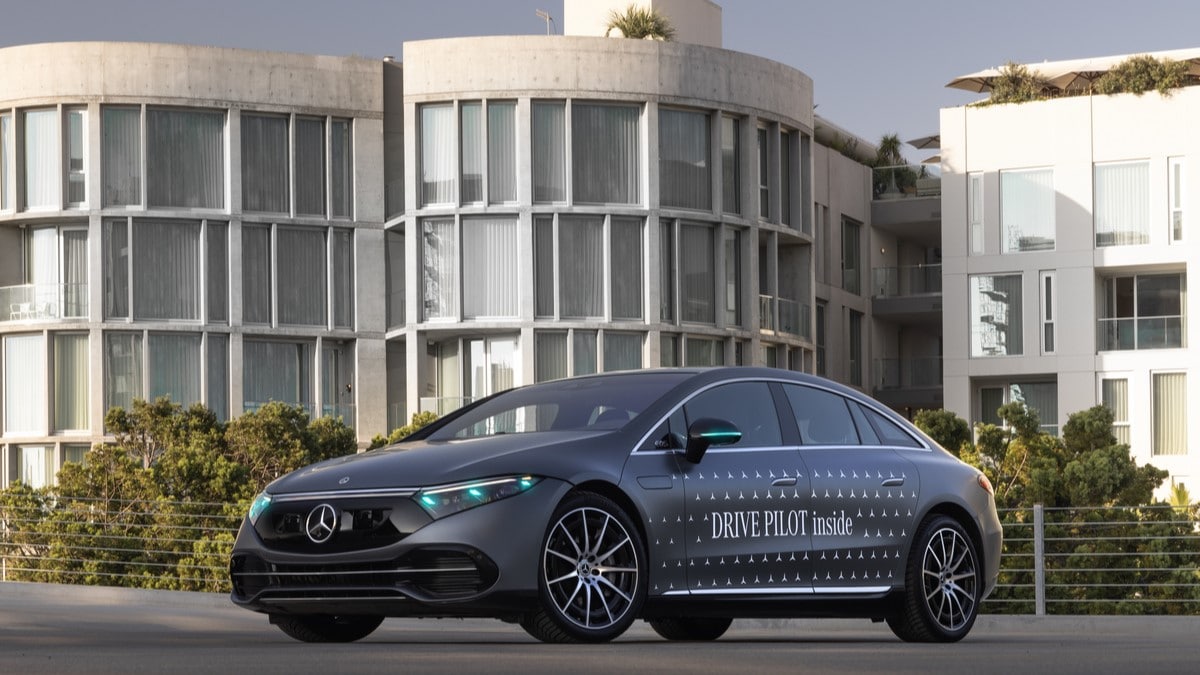A future of self-driving cars will introduce all kinds of new problems for society to solve. Among them: How are we to know when the car is doing the driving?
Mercedes has solved that problem. We’ll just look for the turquoise-colored marker lights.
The company announced this week that both California and Nevada have approved “special exterior marker lights for automated driving.”
Related: Self-Driving Cars — Everything You Need to Know
Mercedes Has the Only System That Needs This
Mercedes has quickly become the technology leader in partial driving automation in the U.S. The automotive industry uses a ladder of five levels to describe efforts to build self-driving cars.
At Level 1, a single system can intervene to help keep the driver safe, but the driver must be in complete control of the car at all times. Automatic emergency braking, for instance, is a Level 1 system.
At the other end of the scale is Level 5 — theoretical fully autonomous cars that wouldn’t even require a steering wheel.
Most automakers in America sell a Level 2 system – one that can take over some driving duties but only with the driver paying close attention, ready to take over at any moment. Tesla’s Autopilot and Full-Self Driving systems are Level 2, as are Ford’s BlueCruise and GM’s Super Cruise.
Mercedes is the only automaker with an approved Level 3 system – one that allows the driver to take their attention off the task of driving under certain conditions. Called Drive Pilot, it’s legal only in California and Nevada.
Our Lyn Woodward has tested it, calling it “a little more exciting than it is scary.”
But Drive Pilot raises a new problem: If a police officer passes you and sees you fiddling with your phone, not touching the wheel, how are they to know a legally permitted Level 3 system is watching the road?
For that matter, when I pass you, how am I to know you’re not unsafe to share the road with?
There’s No Industry Standard Yet
The new lights are Mercedes’ answer. Turquoise exterior lights allow “police officers to identify the system’s status and determine whether drivers are permitted to engage in secondary activities during the conditionally automated journey,” the company says. They could also “substantially enhance public acceptance of automated driving and contribute to road safety, as the lights clearly visualize the automated driving system’s status on the exterior.”
Why turquoise? The company says the color doesn’t already have a fixed meaning in drivers’ minds, and it’s different enough from the lighting emergency vehicles use to avoid anyone thinking there’s a cop in that Mercedes.
Unfortunately, there’s no standard agreement on the color. Mercedes notes, “no general framework in the U.S., China or the UN-ECE (United Nations Economic Commission for Europe) for using turquoise lights in production vehicles.” The company hopes, by going first, to help set a standard others will follow.
Drive Pilot today is available only on the 2024 Mercedes‑Benz S-Class and EQS Sedan models.








